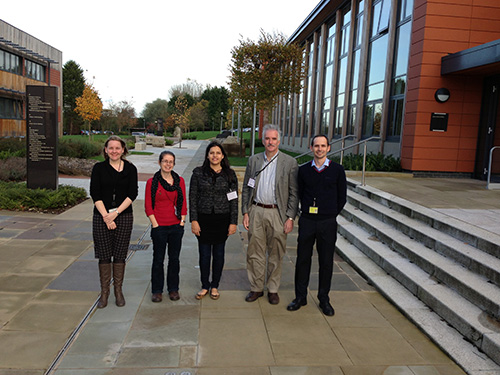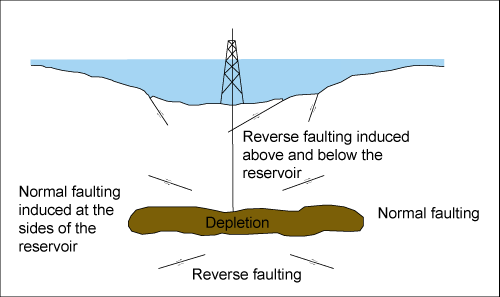The impaCt of hydrOcarbon depletioN on the Treatment of cAprocks within performance assessment for CO2 InjectioN schemes - CONTAIN
CCS and depletion sites
The UK is committed to meeting stringent carbon dioxide (CO2) emission targets over the next 35 years. One potentially valuable technology in achieving this target is the development of carbon capture and storage (CCS) technologies, where CO2 is captured during power generation and, instead of being released into the atmosphere, is injected into porous rocks underground. Porous rocks such as sandstone can act as a reservoir for CO2, which can potentially be stored at depth over long periods of time and kept isolated from the rocks above by a much less porous caprock. The UK has a large 'porosity resource', currently estimated to be of sufficient capacity to store the necessary 2–5 billion tonnes of CO2 to meet 2050 CO2 emission targets. It has been estimated that up to 9 billion tonnes of UK storage capacity comes from reservoirs that previously contained hydrocarbons that have been extracted by the oil and gas industry. This form of CO2 storage has a number of benefits, as the rocks are generally well characterised and there may be pre-existing infrastructure (such as pipelines) suitable for adaption to CO2 injection.
Why does depletion matter?
The process of hydrocarbon extraction, or depletion, can significantly impact both the reservoir involved and the surrounding rocks. These activities can potentially cause deformation, movement on faults and/or damage to infrastructure. The long term impacts of these activities, particularly when the reservoir is 're-inflated' during injection of CO2, are not well understood and there is limited physical data for specific rock types and scenarios. In order for depleted reservoirs to become a viable national resource, these uncertainties must be addressed. As such, this project is focussed on providing a better understanding of the impact of depletion and re-inflation on reservoir and caprock material. It will involve a combined approach, using both laboratory experiments and computer simulation, to improve our understanding of this aspect of storage site behaviour. The project seeks to address this key area with a focussed programme of work that will generate a much needed and unique dataset, new modelling tools and a fuller understanding of the processes involved. The findings will inform regulators and aid operators in reducing the financial and environmental risks of CCS for depleted storage sites, making the technology more likely to happen.
How do we engage with the public?
In addition, work will be carried out to examine effective communication with the public, relating to this new technology. Social acceptability represents a major potential barrier to CCS developments, as indicated by protests and moratoria in several countries. It is therefore critical to understand public attitudes and the bases of concern about CCS, and work as effectively as possible to improve understanding and engagement. Work within this project will explore the factors that determine public and stakeholder understanding and acceptability of CCS storage proposals. The lessons and knowledge derived from this work will be summarised in an outreach and engagement toolkit, which will be disseminated to regulators, operators and communication specialists.




